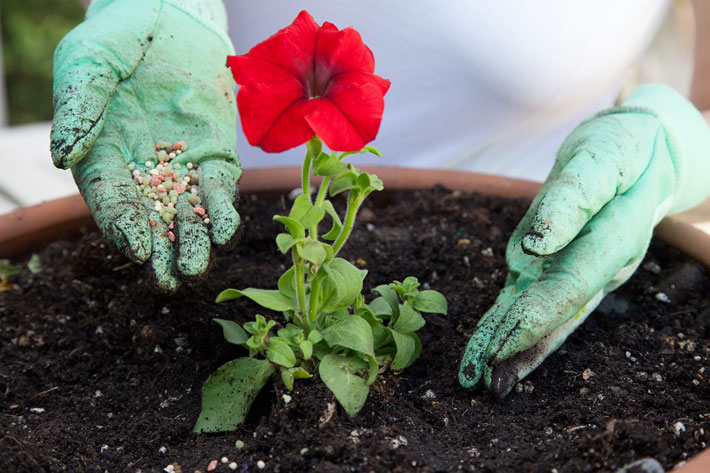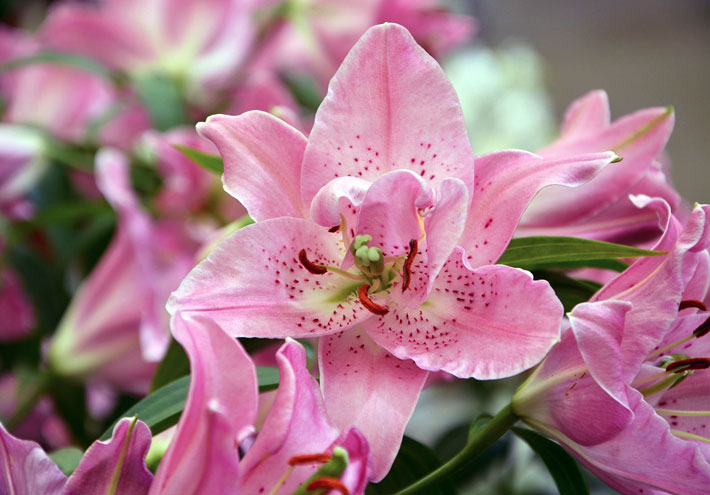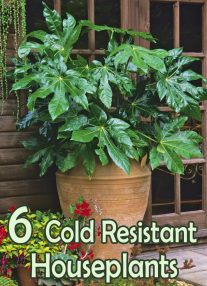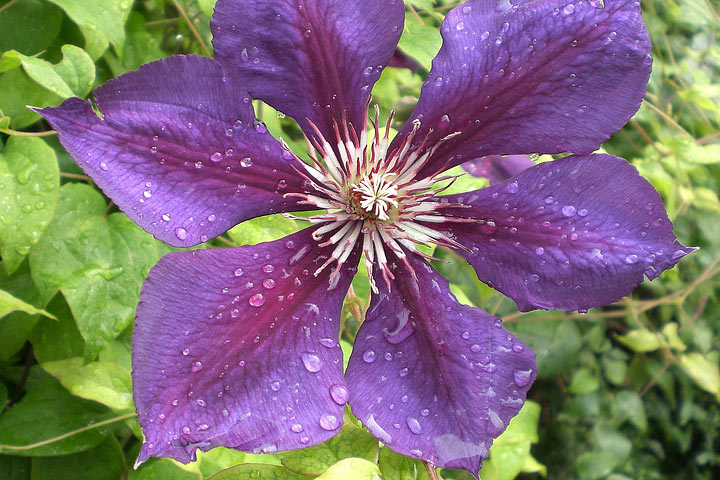
Bloom Boosters are said to increase the number of flowers on your plant. Nonsense. They don’t work, and can actually make your soil toxic, making it more difficult for your plants to grow.
There is no such thing as a Bloom Booster fertilizer!
Bloom Booster – What is it?
Bloom Boosters are a fertilizers with a high middle fertilizer number – they are high in phosphorus. Bloom Boosters may also have a higher than normal amount of potassium.
Any fertilizer with a high level of phosphorus can be considered to be a bloom booster fertilizer, even if the label just calls it fertilizer. If you look at the fertilizer numbers in bloom booster products you quickly realize that every manufacturer’s formulation is different. That’s odd! If there was a special formulation that boosts flowers you would think all manufacturers would use the same formula? They don’t, because there is no such thing. These are just packages of fertilizer with the words ‘bloom booster’ slapped on the label.
Bloom booster fertilizer is nothing more than a marketing gimmick to get you to buy more fertilizer. Many people grow plants for the flowers, and so manufacturers are using your desire for more flowers to sell more products.
Bloom Boosters, Do They Work?
Will a high level of phosphorus increase the number of flowers?
The answer to this question is a bit more complex than it seems. Plants need a certain amount of phosphorus to grow properly. If they get enough phosphorus along with the other needed nutrients, plants will grow to their best ability and produce lots of flowers. If they can’t get enough phosphorus and other nutrients then they under perform.
Adding phosphorus to soil that already has enough phosphorus, or adding it to one that is deficient in one of the other nutrients, will NOT make plants grow better. You are just wasting a natural resource or worse, making your soil toxic.

Adding a bloom booster to soil that already has lots of phosphorus, will NOT increase the number of blooms.
It turns out that in North America, few garden soils have a deficiency of phosphorus, which means that in most of these soils bloom booster does nothing to boost blooms.
If you check bloom booster fertilizers you will notice that some include minor nutrients, along with some nitrogen and potassium. If the fertilizer fixes any deficiency in these other nutrients, plants will perform better. Except for nitrogen, most garden soils do not have a deficiency in these other nutrients.
Do Plants Use a Lot of Phosphorus?
Lets have a closer look at the nutrients plants need. How much phosphorus do plants need?
When rose tissue is analyzed, the fertilizer numbers are in the ratio of 6-1-4. They contain much less phosphorus than nitrogen or potassium. According to Jeff Gillman, “there is usually more calcium, magnesium and sulfur in plant tissue than phosphorus”.
So why would a fertilizer ratio of 1-5-1 (Peters Professional Super Bloom Booster), be good for plants?
Phosphorus is critical for plant growth, but plants don’t need a lot of it. The American Rose Society says “Commercial growers of roses for cut-flower production typically use fertilizers with a 3-1-2 NPK ratio.” I think these guys know how to produce blooms!
Plants do not need high levels of phosphorus to bloom well.
Phosphorus Can be Toxic
High levels of phosphorus in the soil ties up iron so that plants can’t absorb it. This leads to an iron deficiency in the plant, leading to interveinal chlorosis. Excess phosphorus also inhibits the development of mycorrihizal fungi which are very important to plants. These fungi provide water and phosphate to the plant.
Excess phosphorus is toxic to plants.
Does Potassium Boost Blooms?
Some of the bloom boosters also provide an increased level of potassium, and some people feel that potassium is important for flower production. Potassium is essential for plants to grow and flower properly, but high potassium levels will not increase flowering. Flowering is controlled by hormone levels – not nutrient levels.
What About Containers?
Jeff Gillman quotes Timothy Broschat and Kimberly Klock-Moore from the University of Florida “Most container grown plants require only minimal amounts of P for optimal growth and … applications of high P fertilizer will not promote either roots or shoot growth in plants as popularly believed.”
Don’t use bloom boosters for containers.
Phosphorus Does NOT Promote Flowering
There is little evidence that phosphorus promotes flowering. Bloom boosters are not needed, nor do they do help your plants, unless you have a phosphorus or potassium deficiency in the soil. The only way to know this, is with a soil test.
Stop adding phosphorus to your soil!

Scientific Researches
Using the example of high-phosphorus, so-called “bloom booster” fertilizers, they are marketing hype and not much more. A plant will only use as much phosphorus as it needs – which isn’t all that much – and exposing it to more does nothing. In fact, studies have shown that it is excessive nitrogen that “quashes” blooming, not that another product “boosts” it. To overcome that, fertilizer manufacturers add inexpensive phosphorus minerals to ordinary, high-nitrogen formulas in order to dilute the nitrogen content and relieve the suppressing effect.
If you, as a grower, do everything right – light levels, duration, and periodicity, temperatures and temperature variation, humidity, air movement around the plant and its root system, nutrition and watering – you allow the plant to grow and bloom to it’s maximum , genetically-programmed potential. There is nothing you can do that overrides genetics in that respect. On the other hand, any cultural shortfalls can, and likely will hinder the plant from reaching its potential.




Leave a Reply